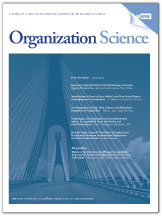Academic articles
Practitioner articles
Working papers
Books
Book chapters
Case studies
Other publications
Subject(s)
Technology, R&D management
Keyword(s)
Technology markets, B2B
Diagnose der globalen Wettbewerbssituation traditioneller
Technologieunternehmen anhand zahlreicher Praxisbeispiele Präsentation von Erfolgsstrategien, mit denen westliche Technologieunternehmen sich erfolgreich gegen die Konkurrenz aus Schwellenländern behaupten können. Konkrete Vorschläge für die Implementierung der entsprechenden Geschäftsstrategien
Die Wettbewerbssituation traditioneller Technologieunternehmen ist im Umbruch. Neue Kundensegmente in den Schwellen- und Entwicklungsländern und neue Wettbewerber aus diesen Regionen verändern die Marktlandschaft rasant. Beides stellt die etablierten Anbieter vor neue Herausforderungen. Um sich zu behaupten, müssen Unternehmen wie Siemens, General Electric, Alstom, Mitsubishi, aber auch der Mittelstand, vertraute Denkweisen aufgeben; denn über die technisch perfekten Produkte hinaus verlangen die neuen Käufer einfache, preiswerte Alternativen. Parallel dazu lassen sich durch komplexe, nicht kopierbare Dienstleistungen wirksame Markteintrittsbarrieren schaffen.
Das Buch behandelt die Chancen und Probleme neuer Strategien und zeigt, wie man sie optimal umsetzt, insbesondere bei Produkt- und Preisgestaltung, Mitarbeiter- und Organisationsentwicklung, Marken- und Vertriebsmanagement.
Pages
154
ISBN
978-3642281372
Subject(s)
Strategy and general management
Keyword(s)
technological innovation, core capabilities, technology portfolio, value network
The case study describes the situation of mobile telephone network operators (MNOs) in 2010 facing a fast increase in the traffic over their third generation (3G) networks (UMTS) following the growing adoption of so-called “smart phones.” Smart phones had capabilities similar to a laptop computer in addition to the normal functions of a cellular telephone: they allowed users to access the Internet virtually anywhere the 3G networks were deployed. Subscribers could thus download music, videos, application software (apps), and upload large files. There were growing concerns among MNOs that some content distributors, and especially Apple with its iTunes and App Store was capturing a large share of the customer value, while not carrying the huge cost of the network. Was there any way for them to regain a share of the content distribution?
| buy now | buy now | buy now |
Subject(s)
Strategy and general management
Keyword(s)
technological innovation, core capabilities, technology portfolio, value network
The case study describes the situation of mobile telephone network operators (MNOs) in 2010 facing a fast increase in the traffic over their third generation (3G) networks (UMTS) following the growing adoption of so-called “smart phones.” Smart phones had capabilities similar to a laptop computer in addition to the normal functions of a cellular telephone: they allowed users to access the Internet virtually anywhere the 3G networks were deployed. Subscribers could thus download music, videos, application software (apps), and upload large files. There were growing concerns among MNOs that some content distributors, and especially Apple with its iTunes and App Store was capturing a large share of the customer value, while not carrying the huge cost of the network. Was there any way for them to regain a share of the content distribution?
| buy now | buy now | buy now |
Subject(s)
Ethics and social responsibility; Marketing
Subject(s)
Human resources management/organizational behavior
Keyword(s)
Error management
Journal Pages
8–11
Subject(s)
Strategy and general management; Technology, R&D management
Volume
3
Journal Pages
6–9
Subject(s)
Marketing
Keyword(s)
marketing, strategy, positioning, branding, heritage, tradition, family business, entrepreneurship, succession planning, consumer, Berlin, food
The case describes a critical external incident that will have fundamental consequences for a small but very successful family business: In 2010, Konnopke’s Imbiss was considered to be one of the, if not the, most famous snack bars in Berlin. This family-owned business was especially famous for the legendary “currywurst,” a Berlin invention that consists of a sausage fried in hot oil and served with ketchup, chili sauce, curry powder, and French fries. The main branch of Konnopke’s Imbiss was located in the Berlin district of Prenzlauer Berg, which was considered to be one of the “coolest” districts of Berlin. Konnopke’s had become a Berlin fast food icon, winning critical acclaim in almost all major Berlin travel guides. But in 2010, the snack bar no longer seemed to fit to its environment, which had changed from a working class district to a posh neighborhood mainly consisting of young freelancers and tourist.
The case describes how an external event (construction work) will have fundamental consequences for a small but very successful family business. This critical incident forces the owner family to rethink its business.
| buy now | buy now | buy now |
Subject(s)
Entrepreneurship; Technology, R&D management
Keyword(s)
innovation
Pages
48
Subject(s)
Human resources management/organizational behavior
Volume
4
Journal Pages
109–112
ISSN (Print)
1727-4192
Subject(s)
Strategy and general management
Keyword(s)
status, network analysis, graphs, tournaments, performance
Two competing predictions about the effect of status on performance appear in the organizational theory and sociological literatures. On the one hand, various researchers have posited that status elevates levels of performance. This line of work emphasizes tangible and intangible resources that accrue to occupants of high-status positions and thus pictures status as an asset. On the other hand, a second line of work emphasizes complacency and distraction as deleterious processes that plague occupants of high-status positions and thus portrays status as a liability. Which of these two approaches best characterizes the actual performance of individuals in a market setting? And are these views in any way reconcilable? In this article, we summarize the two views and test them in two empirical settings: the Professional Golf Association (PGA) and the National Association for Stock Car Racing (NASCAR). Using panel data on the PGA Tour, we model golfers' strokes from par in each competition as a function of their status in the sport. Using similar data on NASCAR's Winston Cup Series, we model drivers' speed in the qualifying round as a function of their status in the sport. We find curvilinear effects of status in both empirical settings. Performance improves with status-until a very high level of status is reached, after which performance wanes. This result not only concurs with the view that status brings tangible and intangible resources, but also provides empirical support for the contention that status fosters dispositions and behaviors that undermine performance.
© 2012 INFORMS
Volume
23
Journal Pages
416–433


